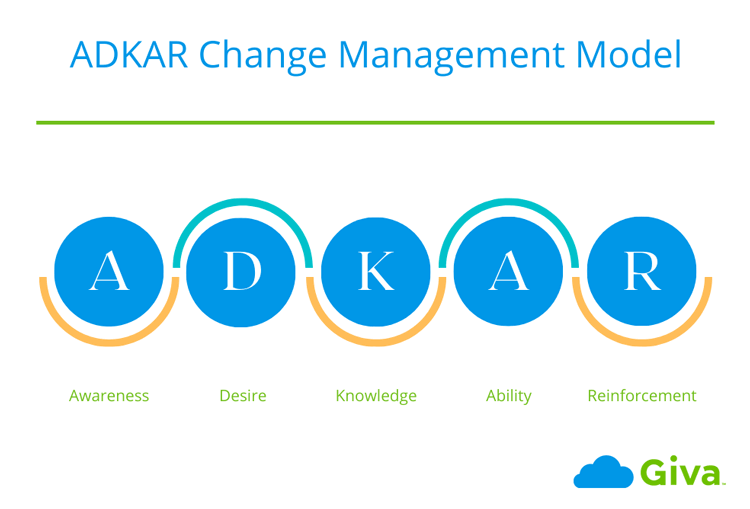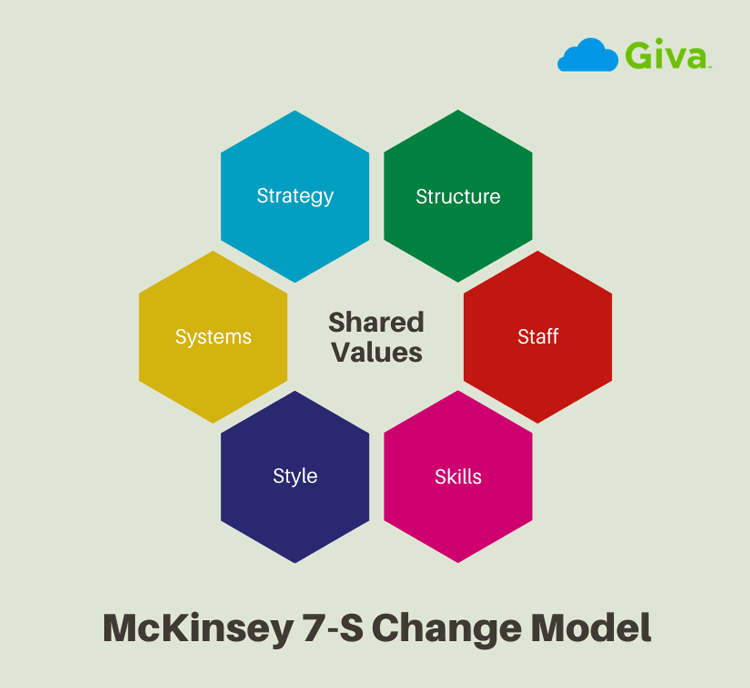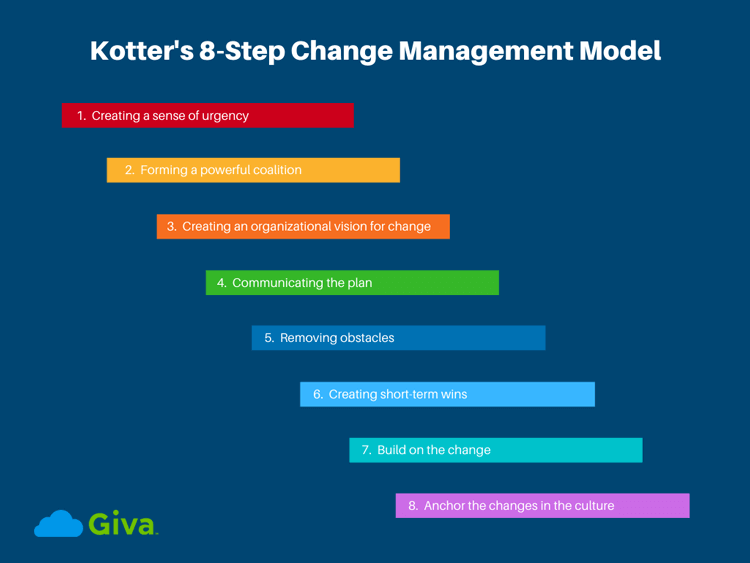The 3 Most Effective Organizational Change Management Models in Healthcare Practices
Change management models are a crucial part of any organization. Healthcare settings in particular are known to be resistant to change and have a lot on the line when it comes to implementation. In order to stay competitive, it is important to know how best to implement change management strategies that will keep your organization running smoothly and efficiently. There are many different models for change management frameworks, but which ones work the best for healthcare?

Why Choosing a Change Model is Important
Before making decisions about change management methodologies, it is imperative for any organization to choose a change management model based on their specific policies, needs and company culture.
Organizational culture largely impacts which change management model will work best for an organization. Some organizations, such as a company with an ingrained need to be efficient and cost-effective in all aspects of their operations, may benefit from the incremental change management approach. Other companies or initiatives that are more innovative in nature might find success by implementing changes quickly, but this strategy can become a source of employee dissatisfaction, and organizations need to acknowledge that any change in policy is implemented by employees.
The following are the 3 most effective healthcare change management models:
-
The ADKAR Change Management Model

The ADKAR model is one of the two foundational change management models created by Prosci Methodology. The ADKAR meaning is based on the five stages that make up its acronym: Awareness, Desire, Knowledge, Ability and Reinforcement.
-
Awareness
The first stage in the ADKAR change management model is when an organization understands that a change needs to be made. For example, if a company wants to increase its customer service and efficiency levels.
-
Desire
When people want something, they take action to get it. Creating desire in employees can be done through various tactics such as: convincing them that a new strategy will lead to better results, or giving rewards or incentives for implementing changes. Encouraging feedback from your team members also makes them more invested in achieving success with this new approach. Employees come to believe that they need this change for their own well-being.
-
Knowledge
Employees become knowledgeable about what needs to happen during the change process by being informed on all aspects of the initiative, including why and how it should be enacted. They have been given guidelines for accepting responsibility if needed and have an understanding of their role in carrying out these tasks. Employees have to understand what needs to be done and how they can do it.
-
Ability
It is crucial for employees to have the ability to carry out these tasks. Employees must be able to use their knowledge and skills in order to do what is expected of them, no matter how difficult or challenging it may be.
-
Reinforcement
Change leaders have to recognize that change has been made with positive results by reinforcing desired behavior through rewards or other incentives.
This type of model is best for your healthcare organization if you have a goal of change that has been identified and you want to ensure your employees are on board with the change.
The ADKAR change management model can be used for any type of implementation in healthcare, but it is most effective when someone wants to increase their level of understanding about productivity or make changes to processes within an organization.
-
-
The McKinsey 7-S Change Model

The McKinsey 7-S model is a collection of seven independent dimensions for modelling an organization, which include: physical organization structures; qualities or resources of each structure that are leveraged towards achieving an aim; existing company policies and documentation; the way the company is organized reflects what is needed now; and core values (long term goals/objectives).
The model includes the following seven elements:
-
Strategy
After assessing the practice's strategy, including its strengths and weaknesses, the change manager identifies where change will be required to align with this new goal. This stage is intended to identify potential pitfalls for success as well as opportunities that could lead to a more successful outcome. The first step in identifying these areas includes answering questions related to how important they are and what level of effort would need to be put into them if change were needed or desired. Allocating resources based on importance can help an organization reach their goals faster and avoid wasted effort by not spending time on things which do not contribute much value or strength toward achieving the ultimate aim of the company or institution.
-
Structure
The organization needs to recognize the physical organizational structures that are in place. This step includes identifying the qualities and resources of each organizational structure that can be leveraged to help change happen.
-
Systems
It is important to understand the existing company policies and documentation. During this process, a change leader would reevaluate the way that the company is organized to make sure it reflects what needs are being satisfied now. Employees would also understand how processes can reinforce desired changes by aligning themselves with organizational values. The change manager needs to identify where potential obstacles lie and determine plans on how best to address them before they become problems or when they arise during implementation. This includes looking at data sources like customer surveys or focus groups as well as qualitative research.
-
Shared Values
You must understand what the core values of your organization are and then define the long term goals and objectives of your company.
-
Staff
Your change leaders would engage with staff members to perform a needs analysis to discover what people need in order for change management efforts to be effective. This includes understanding their roles, strengths and weaknesses as well as gauging their readiness levels when it comes to change.
-
Style
Corporate culture influences change and adapting accordingly. There will be some changes that need a formal, top-down approach while others may require an organic, grassroots effort. Recognizing which type of organizational change is necessary for each situation can help lead to success in implementing these types of change management methods successfully.
-
Skills
The current skill sets of your healthcare organization's employees should be evaluated. The change manager should closely monitor the skills of their healthcare workers and make sure that those skills are in line with what is needed for change management.
The McKinsey 7-S change model has been implemented by many healthcare organizations with great success due to its effectiveness in changing behaviors while simultaneously improving productivity. These types of change management principles can be used successfully with organizations that are experiencing problems related to staff skills, processes and culture.
-
-
The Kotter Change Management Model

Kotter's 8-Step Change Management Model is an extensive change model. It focuses on change as a process that has eight phases, with the first three steps being pre-intervention:
-
Creating a sense of urgency
Creating a sense of urgency is the first step in Kotter's change management model. It involves convincing people that there is need for change and that they should support this change. You can do this by using data to show how things are not working well enough or by pointing out new challenges . Rather than focusing on the negatives, present an opportunity.
-
Forming a powerful coalition
At this step, you need to form a powerful coalition of people who are in favor of change. The power and size of the group is important. Some people might not want change, so it is up to the leader to convince them that there will be benefits for all involved if they choose to change their ways. You would energize followers by giving them tasks that can help wide adoption of the change.
-
Creating an organizational vision for change
This step includes four sub-steps where goals and performance standards are set, objectives (which will consist of short term wins) are defined, and strategies are identified to strengthen support for change from all involved parties.
-
Communicating the plan
This step requires two parts: telling others about the changes and listening to feedback they have regarding how it may affect them personally or their daily operations. The more aware the employees are of the changes and the more they willfully participate in the change, the more successful the change implementation will be.
-
Removing obstacles
The objective of this step is to reevaluate policies with respect to productivity such as absenteeism, employee turnover rates and current benefits. It is important to reduce the barriers to change adoption and to remove the current obstacles that will inhibit success.
-
Creating short-term wins
This step is where change leaders need to recognize the collective effort of the company. This will establish a sense of accomplishment and can be achieved by focusing on the organization's shared goals.
-
Build on the change
After the implementation of the change, the change leader should assess the effectiveness of the new policies. They should then develop a new, comprehensive plan of action to address any issues that have arisen. This step is also important as it will help show employees the organization's commitment to change.
-
Anchor the changes in the culture
A change in policy cannot be successful until it becomes part of the company's culture. Change leaders need to be persistent and address any issues that arise. The change leader needs to remember the importance of this step in order for everyone involved with the company's culture to understand how important these changes are, even if they are perceived as difficult or disruptive. Impactful change cannot happen until it becomes part of corporate culture, so have patience and focus on being effective at every stage.
This model is most effective if your organization is in need of change that is more than just a policy update. The Kotter's 8-Step Change Management Model can help your organization by making changes that are more effective and easier to implement.
-
Change needs to be managed by looking at all aspects of your current processes including not only how they are structured, but also who is involved, where they take place, and when it happens.
The best way to keep your organization running smoothly is by implementing a change management model that will work for you. It is important to know which change models are the most effective, and how they can be used in different settings. If you are looking at ways to increase productivity or streamline processes within your workplace, take some time to explore what options are available so you can find one that works best for your needs.





